Keeping your lawn green and healthy requires regular watering and maintenance. Installing an automatic sprinkler system can help you keep up with a weekly watering schedule, save time on lawn maintenance, and lower your water bills. But veteran homeowners know all too well that hitting that sprinkler system efficiently and hitting that sweet spot each time is much easier said than done.
An automatic sprinkler system provides many benefits for your home and property. But it’s important that you use it efficiently to get the best results. Choosing the right system and understanding how to properly use it is the difference-maker when it comes to having beautiful, healthy landscaping year-round.
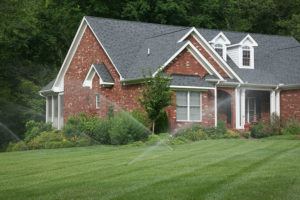
Choosing the Right Irrigation System
There are several types of watering systems to choose from. But the size and layout of your property may determine which one is best for your home. If you have questions or concerns, the irrigation specialists at Circle D Construction can help. They provide advice and assistance when it comes time to choose the best type of irrigation system for your yard.
Learn More: Choosing the Right Sprinkler System for Your Yard
In-Ground Sprinkler Systems
Many homeowners prefer the ease and convenience of an in-ground watering system. With in-ground systems, pipes are buried and don’t interfere with lawn mowing and maintenance. Because nothing but the sprinkler heads is visible above ground, having an in-ground sprinkler system also doesn’t detract from the beauty of your landscaping.
In-ground watering systems are conveniently connected to the main control panel. This allows the watering of specific lawn areas or zones at different times. By programming a timer on the control panel, you can set specific watering times for your lawn, trees, shrubs, plants, and flower gardens at different intervals. Doing this can drastically increase your sprinkler system’s efficiency for all types of properties. This is especially true for those with large yards or a lot of trees and landscaping.
Above-Ground Sprinkler Systems
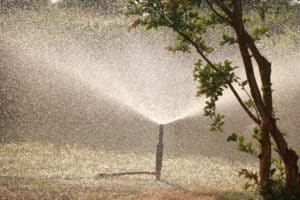
Above-ground watering systems are connected to a hose and a movable sprinkler that often rotates or oscillates. This type of system is operated manually and must be moved from area to area. For this reason, it’s much less efficient and more inconvenient than an in-ground sprinkler system. There’s no control panel or timer, so it’s important to remember to manually turn the water off yourself. If you forget, you could damage your lawn from overwatering. Unlike in-ground systems, above-ground systems often create a visual eyesore with garden hoses and large sprinkler heads laying across the lawn. Above-ground sprinkler systems typically work best for small yards and garden areas where manual watering is not a chore.
Drip Irrigation Systems
Drip irrigation systems produce concentrated amounts of water over an extended period of time. This allows moisture to penetrate deeper into the soil. It’s great for properties with drought-tolerant plants, as well as shrubs and flowers. With a drip irrigation system, water can be directed to specific planting areas. It’s a very cost-effective way to address targeted areas and conserve water.
Soaker Hoses
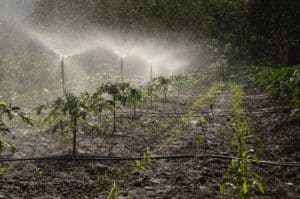
Soaker hoses are hoses with tiny holes that allow water to trickle out very slowly over an extended period of time. This lets water seep into the soil at a slower rate and helps prevent overwatering. Soaker hoses can be placed on top of the ground, or hidden beneath the topsoil or mulch. This type of watering system is best for gardens and planted areas that don’t require much water.
Sprinkler System Efficiency
Installing a watering system makes lawn maintenance easier, but it won’t provide everything you need to keep your lawn green and healthy. Watering the right way is all up to you and the schedule you set.
Lawns require regular irrigation to stay lush. In fact, most lawns need an average of 1to 1.5 inches of water each week to stay healthy. The amount of water is determined by the type of soil and grass, the level of sun exposure, and the regional climate conditions. Sprinkler system efficiency and regular watering are essential year-round, especially during hot weather. For best results, follow these tips:
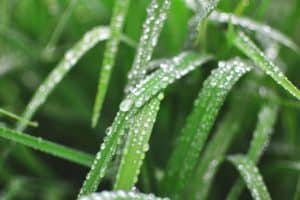
- Avoid daily watering, which can saturate and kill your lawn.
- Monitor your grass for signs of fungal growth and lawn diseases, which is often a result of overwatering.
- During summer months, it’s best to water early in the morning from 4 a.m. to 7 a.m., or at the end of the day after 9 p.m. so water won’t evaporate in the heat.
- Avoid shallow, quick watering, especially during warm weather. Deep watering promotes stronger, deeper root systems that hold moisture and nutrients.
Create a Watering Schedule
Creating a watering schedule is extremely important for sprinkler system efficiency. In order to water your lawn efficiently, it’s important to create a schedule. A watering schedule buys you back time for other projects, ensures consistency, and often allows for more precise care.
Set a Basic Schedule
When you’re first planning your sprinkler system schedule, you want to make sure it’s adequate enough for both the hottest and driest part of your summer without drowning the yard. This schedule is often pre-programmed into most sprinkler systems. You can start with this level and change it throughout the seasons as needed. Trial and error coupled with daily monitoring can help you adjust as needed.
Monitor Weather Conditions

You need to keep an eye on the weather and change your watering schedule as precipitation occurs. Some local meteorologists project a watering number that gives homeowners an idea of how much they need to use their sprinklers at a given time. Other system units are equipped with a rain sensor that prevents sprinklers from turning on during or shortly after a rain shower.
Change Your Schedule Periodically
Once you have a basic sprinkler schedule, you can alter when and how you water, as needed. The key to saving money and getting the most out of your sprinkler system is frequent changes to the programming. Scorching Texas summers can require a lot of your sprinkler system, but there are other seasons when this level of watering would be wasteful or even detrimental. Despite the heat, there may be weeks when your area gets plenty of rain. Frequent precipitation can give the sprinkler system a break, and you can water intermittently as you see fit. Feel free to change your schedule as needed to accommodate weather conditions.
Pick The Right Time Of Day
The best time to water your lawn is when daily temperatures are at their lowest. This means you’ll want to water either in the early morning hours or very late at night. Believe it or not, if you water when it’s too hot, you can actually scorch and damage your plants. Because evaporation rates are much higher when the temperatures are at their peak, your landscaping will actually require more water. Certain parts of the United States, like Texas, have watering restrictions at particular times of day to help conserve water. Some places will also set a sprinkler-system time limit. Make sure you know the watering laws in your area.
Position Your Sprinklers Properly
In order to increase your sprinkler system’s efficiency, it’s always a good idea to make sure your sprinkler heads are pointed in the right direction. Don’t waste water by pointing them at sidewalks and streets that obviously don’t need to be watered. You also want to be sure they aren’t aimed at fences or wood structures, which can sustain damage from repeated direct contact with water.
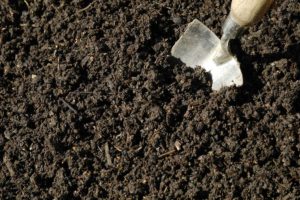
Identify Your Soil Type
Most soil types are either acid-based or alkaline-based. Both types, however, have a significant impact on your grass and plant growth, as well as lawn maintenance requirements.
Sandy soils are grainy and don’t hold moisture or nutrients well. Clay soils have a thick consistency that helps retain nutrients. However, water and air have a hard time penetrating the soil easily. If you’re unsure of your yard’s soil type, a test can easily determine the pH balance and provide guidance on watering practices.
Grass Type
Each grass type has specific growth conditions that affect irrigation and maintenance:
- Warm-season grasses such as Bermuda, Centipede, St. Augustine, and Zoysia have below-ground runners that create a thick mat of turf above ground. These grasses are great for erosion control and crowding out weeds. In general, warm-season grasses need about 20 percent less water than cool-season grasses. This is good news for most Texas homeowners, since the DFW area is home to mostly warm-season grasses.
- Cool-season grasses like Fescue, Kentucky Bluegrass, and Ryegrass are found in areas with cooler climates. They can withstand cold winter temperatures much easier than warm-season grasses. For example, Kentucky Bluegrass goes dormant in the winter, then returns with the spring.
Sunlight

The amount of sunlight your property gets on a daily basis will impact your lawn’s irrigation requirements. Areas that experience increased sun exposure require more water than shaded areas, so you may not want to water all zones the same way. It’s helpful to take a walk around your property to assess the amount of sunlight each area receives before you determine watering needs. If you have an in-ground sprinkler system, you can easily set the timer on the control panel for specific zone watering requirements.
All lawns require proper irrigation to survive, regardless of size, location, and climate conditions. Whether you rely on rainfall or a sprinkler system, you must make sure your lawn gets the right amount of water for healthy growth. Overwatering or underwatering can create a variety of lawn problems that can kill your grass and plants.
